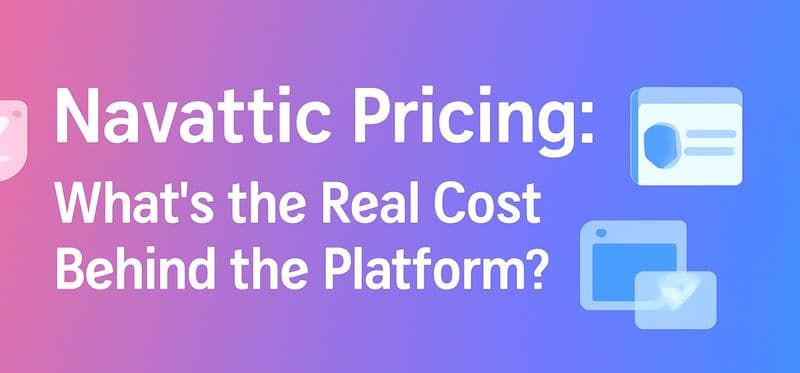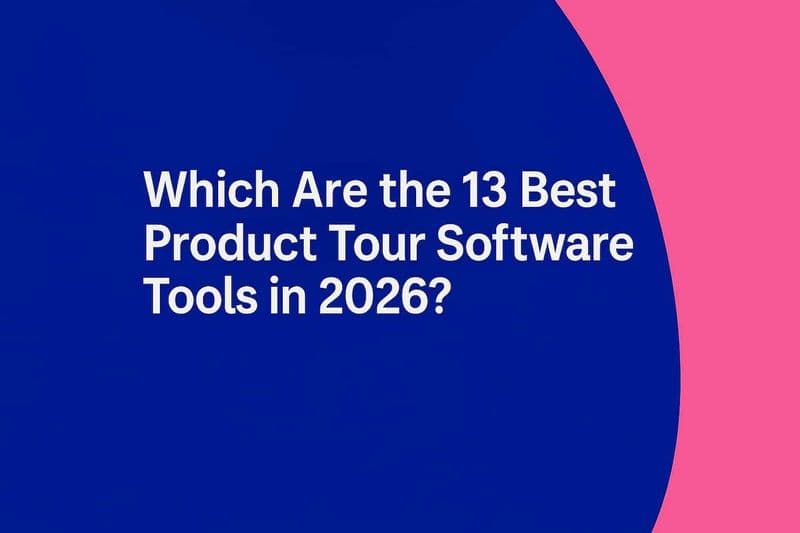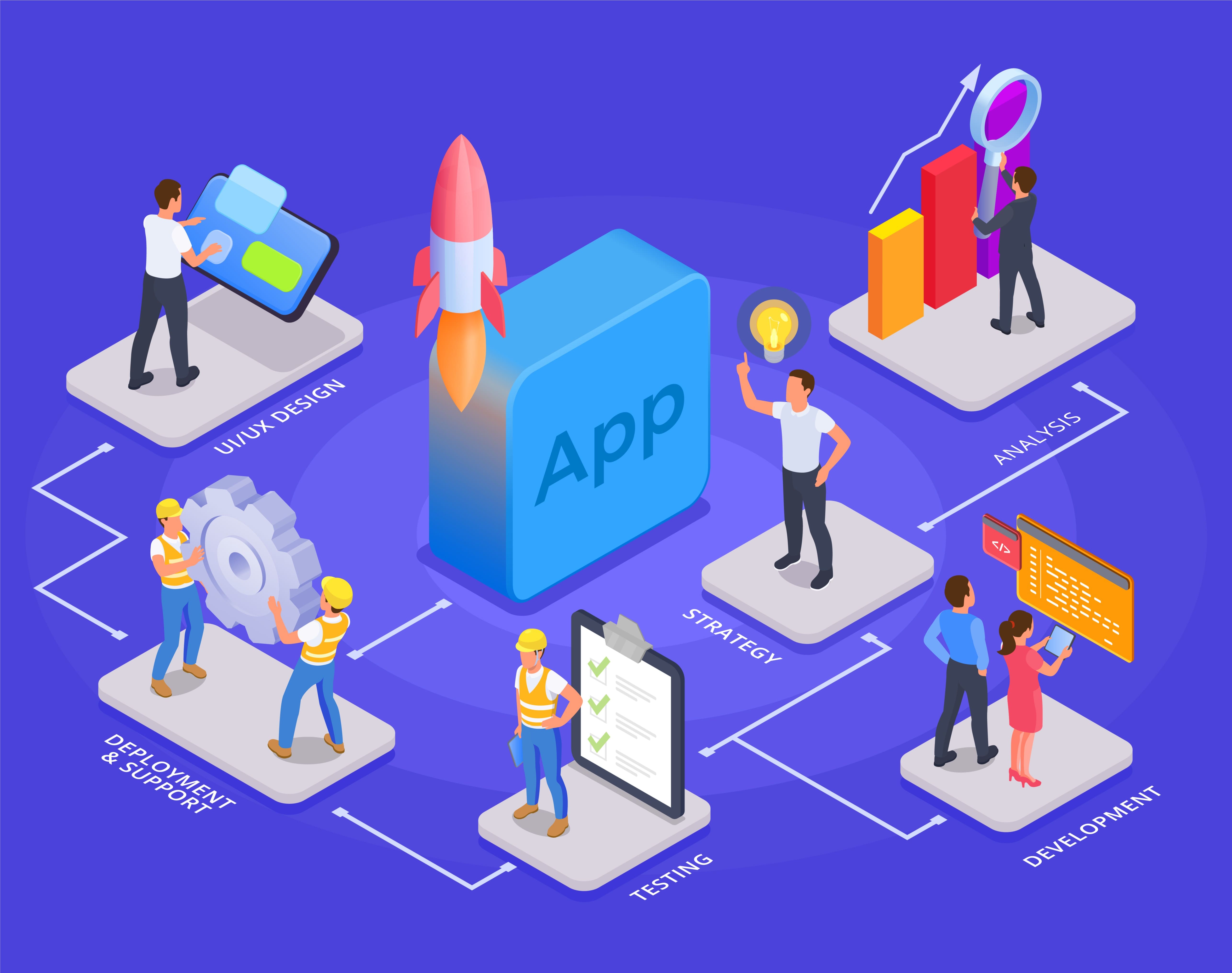
Today, building without direction is a recipe for wasted sprints, misaligned teams, and missed revenue goals. A SaaS product roadmap isn’t just a list of features—it’s your blueprint for turning customer feedback into competitive advantage.
Done right, a roadmap aligns product, marketing, and sales around what matters most: solving real user problems. It helps you prioritize ruthlessly, say no strategically, and keep internal and external stakeholders in sync—without losing agility.
In this guide, we’ll break down what makes an effective SaaS roadmap, share proven frameworks, and highlight public roadmap tools to help your product team execute with clarity and confidence.
Why Every SaaS Product Needs a Strategic Roadmap?
A SaaS product roadmap isn’t just a list of features—it’s a strategic tool that connects your product strategy to execution. It aligns cross-functional team members—from product and marketing to sales and development—around shared goals, specific dates, and timelines.
A roadmap is invaluable for SaaS marketers. It helps plan campaigns around upcoming launches, build buzz for new features, and align messaging with real progress. It also strengthens user experience by signaling transparency and responsiveness to customer needs, building long-term trust with users and prospects.
Beyond internal planning, a well-crafted roadmap supports project management and fuels your content strategy. Blog posts, email campaigns, and social media can all tie into your product’s evolution. When shared as a public product roadmap, it positions your brand as forward-thinking and in tune with your community, demonstrating alignment with modern best practices in SaaS growth.
How to Make a SaaS Roadmap: Step-by-Step for Marketers?
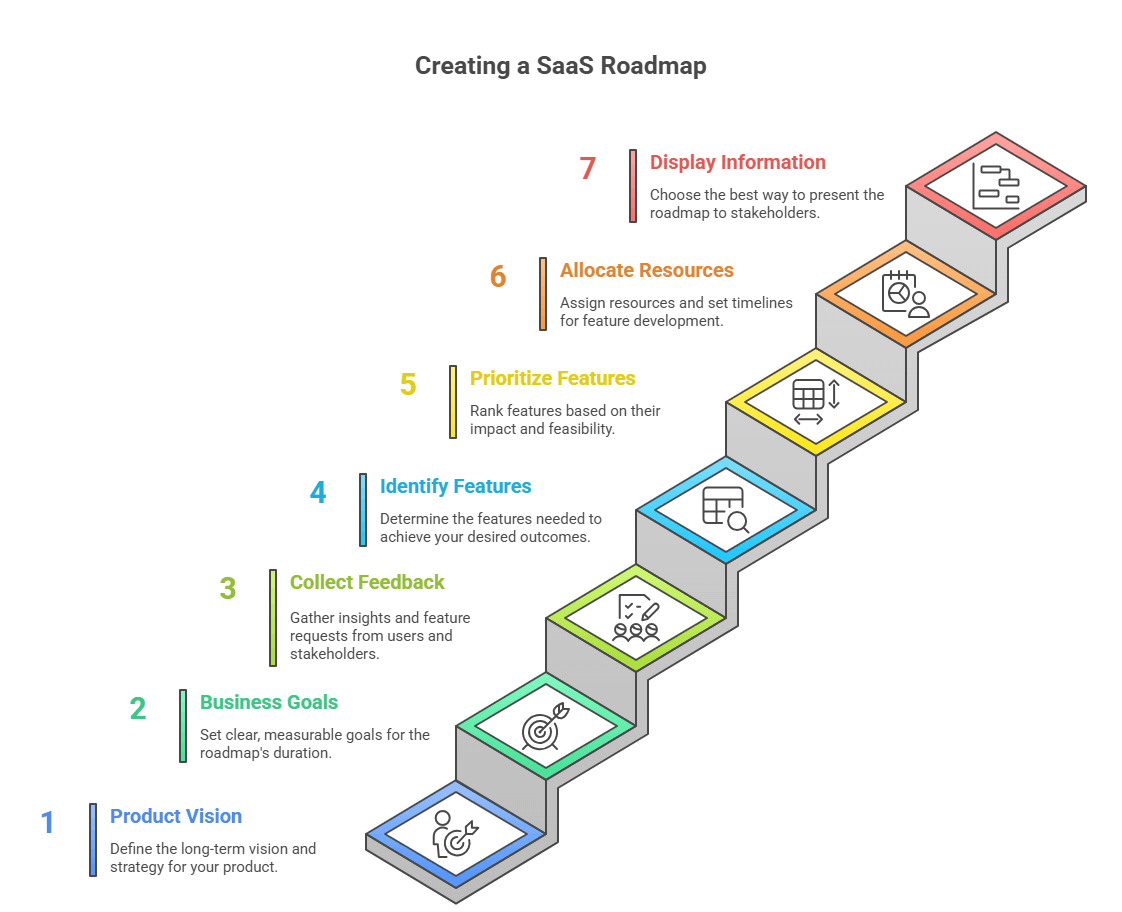
A well-crafted SaaS product roadmap isn't just a product team tool—it’s a vital strategic asset for SaaS marketers. It helps you anticipate upcoming features, align campaigns with product releases, and communicate effectively across internal teams and external users.
Here’s a detailed, step-by-step guide to building a product roadmap SaaS strategy that adds value across departments and keeps your product moving forward.
Step 1: Establish Your Product Vision and Strategy
Before diving into tasks and timelines, clarify the why behind your product. What problems does it solve? Who is your target audience? This vision sets the tone for your entire SaaS product development process.
Example: If you're building a productivity tool for remote teams, your vision might be “to simplify team collaboration through intuitive, real-time tools.”
Step 2: Define Your Business Goals For The Life of The Roadmap
Your SaaS product roadmap should directly support business objectives—whether it’s hitting MRR goals, improving customer retention, or launching in a new market. Every feature or initiative should connect back to these KPIs.
For marketers, this means syncing product goals with campaign objectives—for example, planning lead-gen campaigns around major feature launches or releases.
Step 3: Collect Feedback and Feature Requests
Leverage customer feedback, product reviews, user interviews, and input from the sales and customer support teams. Tools like Canny, Productboard, and internal NPS surveys can help gather and manage requests.
Why it matters for marketers: This step uncovers customer pain points and language you can reuse in messaging. It also shows which features customers care about most, which is valuable for demand generation.
Step 4: Identify Features To Achieve Your Outcomes
With goals and feedback, list features, improvements, and bug fixes that will help move the needle. This could include onboarding improvements, performance upgrades, or brand-new modules.
Think: “Which product features can improve customer satisfaction, reduce churn, or support an upsell opportunity?”
You’re now shaping your product roadmap SaaS strategy based on real value.
Step 5: Prioritize The Features To Your Roadmap
Not all features are created equal. To prioritise, use frameworks like RICE (Reach, Impact, Confidence, Effort) or MoSCoW (Must-have, Should-have, Could-have, Won’t-have).
Marketing tip: Align high-impact features with campaign timelines. Prioritise those with the potential to create buzz, improve conversion, or support upsells.
Step 6: Allocate Resources And Set Timelines
Work with your product and development teams to plan who will work on what, and by when. Be realistic—factor in design needs, dev cycles, QA testing, and marketing prep.
This step is essential for avoiding launch chaos and ensuring your team can support feature rollouts with blogs, social posts, and email campaigns.
Step 7: Decide How to Display The Information
Your SaaS product roadmap should be clear, accessible, and tailored to your audience. Some teams prefer timeline-based Gantt charts, while others use kanban-style boards.
Pro tip: Create a public SaaS product roadmap using a public roadmap tool like Trello, Notion, or ProductPlan. This builds trust, shows transparency, and increases user engagement.
For SaaS marketers, a visual roadmap also helps plan content and product marketing calendars.
Step 8: Communicate the Roadmap To All Stakeholders
The roadmap is only helpful if everyone knows about it. Share it with cross-functional teams—engineering, sales, support, and marketing. Keep it updated and refer back to it often.
Use it in internal updates, campaign briefs, product launch decks, and blog posts to keep messaging consistent.
Pro Tip for marketers: Use the roadmap to drive pre-launch excitement. Tease upcoming newsletter features, create beta access landing pages, and collect early feedback.
7 Must-Have Elements of a High-Impact SaaS Product Roadmap

A strategic and well-crafted SaaS product roadmap is far more than a feature timeline. It’s a marketing asset, alignment tool, and trust-builder rolled into one. For SaaS marketers, it's a powerful guide to plan launch campaigns, craft product narratives, and keep messaging consistent across the funnel.
Let’s break down what makes a product roadmap SaaS approach truly effective—along with how you, as a marketer, can leverage each component to improve engagement, clarity, and growth.
1. Don’t just describe features—Inspire customer action
Your roadmap should paint a picture of customer outcomes, not just product tasks. Users don’t care that you’re “adding a calendar integration”—they care about how it saves them time or helps them stay organised. Translate technical features into marketing-friendly benefits.
Instead of: “Calendar integration – Q2”
Say: “Save hours each week by syncing meetings across your favourite tools (Coming Q2)”
2. Make it visual and conversion-ready
A successful SaaS product roadmap is visual, not verbose. Use simple, scannable formats like swimlanes, now-next-later columns, or release timelines. Tools like Trello, Productboard, Notion, or Roadmunk allow teams to create visually engaging public roadmaps with minimal effort.
For example, Buffer’s public roadmap on Trello is a great SaaS product roadmap example—it’s transparent, skimmable, and user-friendly.
3. Encourage dialogue with your users
Great roadmaps are collaborative, not one-way broadcasts. Invite your users to participate—let them vote on upcoming features, comment on suggestions, or submit ideas. Platforms like Canny, UserVoice, and Sleekplan are built for this kind of feedback collection.
Use the roadmap as a marketing touchpoint:
Run “Vote on our next feature” email campaigns
Include CTAs in blog posts or feature announcements
Reward beta testers for contributions to roadmap discussions
4. Promote your roadmap—internally and externally
Don’t let your roadmap collect dust in a Notion folder. Actively promote it across touchpoints that matter:
In product documentation: Add it to your help centre or onboarding checklists
On your website: Create a public “What’s Coming” page
In release emails: Add a “sneak peek” at what’s launching next
In external comms: Include it in pitch decks, QBRs, or investor updates
Example: ConvertKit showcases its roadmap on its website, helping users understand what's coming while creating anticipation for future features.
5. Keep it updated—or don’t show it at all
A roadmap that lists “Coming Q4 2023” in mid-2025 damages credibility and hurts user trust. Assign clear ownership to ensure monthly or quarterly reviews—often a joint responsibility between the product marketing and product ops teams.
Build an internal checklist:
Are completed items marked as shipped?
Are priorities reshuffled as needed?
Have users been updated on delays or changes?
6. Use it to align your internal teams
Before you publish your roadmap externally, ensure it’s fully aligned internally. The SaaS product roadmap should serve as a central source of truth across marketing, product, sales, support, and leadership.
Ask:
Does sales know how to position these upcoming features?
Is marketing aware of timelines for major launches?
Can support prep help articles or videos in advance?
7. Combine insights, not just opinions
A strong product roadmap SaaS strategy is built on data, not just intuition or internal brainstorming. Use inputs like:
Customer interviews for qualitative insights
Product analytics for usage patterns and adoption trends
Sales CRM notes for repeated objections and feature asks
Churn surveys to uncover missing value drivers
Community feedback and forums to spot recurring themes
Example: If analytics show low adoption of a key feature, and churn surveys mention confusion, your roadmap could prioritise UI improvements + tooltips + educational content.
Tips for Creating an Effective SaaS Product Roadmap
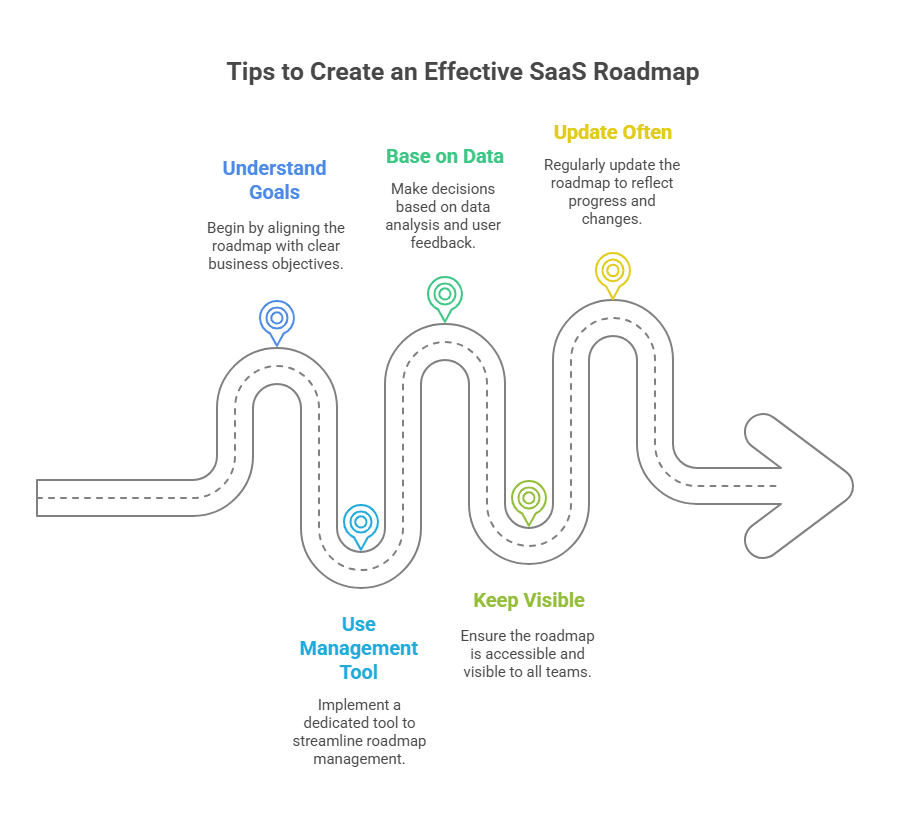
Building a great SaaS roadmap isn’t just about plotting features on a timeline—it’s about aligning your product development efforts with business goals, team workflows, and user expectations. Whether you're a startup or scaling, these tips will help you turn your first step into a winning strategy.
1. Start with a Clear Understanding of Business Goals
Before you build any product development roadmap, ensure your product managers, design team, and leadership have a clear understanding of the direction of your product. Your roadmap should reflect company priorities across different departments—from development to the marketing team and sales team.
2. Use a Purpose-Built Product Management Tool
Don't manage your roadmap in outdated docs. A product management tool or project management tool gives teams visibility into the product backlog, priorities, and upcoming releases—keeping everything organized and collaborative.
3. Base Decisions on Data & Feedback
Leverage market research, analytics, and customer feedback management tools. Every item on your roadmap—whether it’s a bug fix or a new feature—should be backed by valuable feedback from your current users or prospects. Use prioritization frameworks like the RICE framework to guide decision-making.
4. Keep It Visible Across Teams
Your roadmap isn't just for the product team. Share it with marketing, sales, support, and design. Transparency fosters a sense of community, aligns messaging, and gives the marketing team early visibility into upcoming releases.
5. Update It Often to Reflect Progress
An outdated roadmap is worse than none. Regularly update it to show product development progress, shifting priorities, or new specific features in the pipeline. This creates clarity and encourages alignment between product managers and stakeholders.
SaaS Roadmap Examples You’ll Want to Steal
Choosing the right roadmap format can make or break your product communication strategy. Whether you're sharing updates with internal teams or building transparency with users, the structure of your SaaS product roadmap should align with your goals, audience, and product maturity.
Here are some compelling SaaS product roadmap example and when to use them:
Example 1: Feature-Based Kanban Roadmap

This style is perfect if you need a quick, visual way to organize features by priority and timing.
What it looks like:
A Kanban-style board divided into columns like Now, Next, and Later. Each card represents a feature, making it easy to see what’s coming up without committing to rigid deadlines.
Why it works:
Feature-focused: Helps your team understand what’s being built.
Time-flexible: "Now/Next/Later" buckets avoid hard deadlines and reduce pressure.
Evidence-backed: Ties each feature to real customer data like number of requests, MRR impact, and opportunity revenue.
Best for: Teams that want to align around features and feedback without overcommitting on timing.
Tool spotlight: Built using Savio. Try it free to start your own roadmap.
Example 2: Outcome-Based Roadmap with OKRs
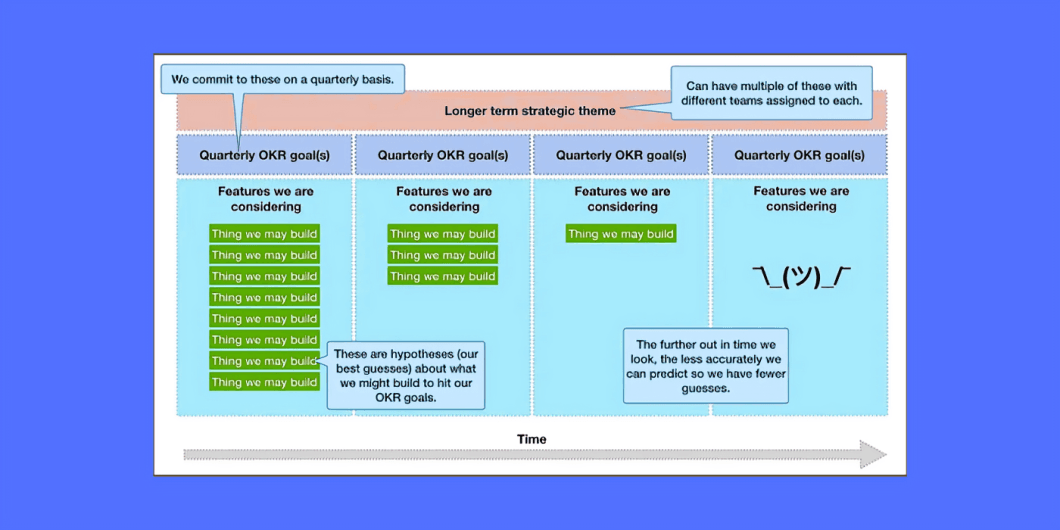
Inspired by Jeff Gothelf, this roadmap anchors every initiative to a measurable outcome, not just a feature.
What it looks like:
Strategic themes (e.g. retention, onboarding success) paired with quarterly Objectives and Key Results (OKRs). Features are listed as options to support those outcomes.
Why it works:
Customer-centric: Focuses on behavior change and business impact.
Agile-friendly: Encourages flexibility over rigid planning.
Goal-oriented: Aligns product decisions with high-level objectives.
Best for: Teams using OKRs and outcome-driven product strategies who want to stay focused on impact, not just output.
Example 3: Gantt Chart Roadmap

Gantt charts offer a timeline-based view that’s great for coordinating complex builds or external releases.
What it looks like:
A horizontal bar chart showing when each feature will be built and launched. Tasks are often displayed with dependencies and specific date ranges.
Why it works:
Timeline-focused: Ideal for mapping sprints, milestones, and deadlines.
Detail-oriented: Includes dependencies between tasks and initiatives.
Clear visibility: Great for sharing with stakeholders or executives who want scheduling clarity.
Best for: Teams with structured delivery timelines or external release commitments.
Turn Roadmap Features Into Customer Wins with SmartCue
A great SaaS product roadmap sets the direction, but how you present those features can make or break user adoption. That’s where SmartCue comes in.
SmartCue helps customer-centric SaaS teams create personalized, interactive product demos that bring roadmap features to life. Whether you're launching a new feature or teasing what's next, SmartCue turns static roadmap updates into dynamic, click-through experiences that boost understanding and engagement.
Make your roadmap more than a plan—make it a story users can experience. Start creating better product narratives with SmartCue.
Book Your 14-Day Free Trial Now
Conclusion
A well-crafted SaaS product roadmap is more than just a planning tool—it’s a strategic asset that connects your product vision with customer value, team alignment, and marketing momentum. Whether you prioritize features, launch updates, or build user trust, your roadmap should inspire, engage, and evolve with your audience. By using the right format, keeping it updated, and making it visible across channels, you empower every department, especially marketing, to deliver smarter, more impactful results.
Frequently Asked Questions
How often should I update my SaaS product roadmap?
You should update your SaaS product roadmap often, ideally every three months or after important product updates. This helps you stay on track with market changes, user feedback, and your business goals. It also ensures all teams know what is going on and keeps everyone, even those not on your team, up to date with the latest news about the product roadmap.
What tools are best for creating a SaaS roadmap?
There are many tools you can use to make a SaaS roadmap. Some good ones are Aha!, Trello and Asana. Each tool has its unique features. Some give you visual timelines. Others help with task management and let people work together more efficiently. These tools help your team stay on the same page and track goals. Pick the one that works best for your needs!
How do I align my roadmap with market changes?
To keep your roadmap in line with market changes, you need to collect feedback often from your customers and other key people. Look at what is happening in the market and what your competitors are doing. After that, change your main tasks to match the new trends. Use information from data to help you stay up to date. This will ensure the roadmap stays useful and meets user needs as they change over time.
Can a good roadmap increase investor interest?
Yes, having a good roadmap can really help attract investors to your SaaS product. It shows that you have a clear vision and know where to take the business. The roadmap lets people see that you know what the market needs. It also shows that you plan well for the future. Investors can understand how their money will help grow the product and bring in new ideas.

